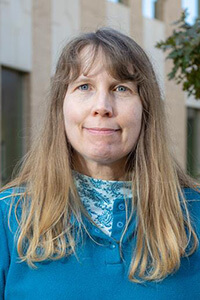Progress is Reported on Research Exploring Use of Deep-Brain Stimulation for Psychosis, Schizophrenia
Progress is Reported on Research Exploring Use of Deep-Brain Stimulation for Psychosis, Schizophrenia

Investigators are reporting progress in research aiming to determine if deep-brain stimulation (DBS) can be used to help alleviate certain symptoms of psychosis and schizophrenia. Their results appear in the journal Neuromodulation.
Deep-brain stimulation is a surgical procedure involving the implantation of electrodes within the brain. Delivering pulses of electric current, these “brain pacemakers” have been approved by the Food and Drug Administration for use in disorders including Parkinson’s disease, obsessive-compulsive disorder, and epilepsy, in which they address symptoms originating in brain circuits. Additionally, DBS has been tested on an experimental basis in treating refractory major depression by BBRF Scientific Council member and three-time grantee Helen Mayberg, M.D.
A project based on a 2015 BBRF Independent Investigator grant to Judith Gault, Ph.D., at the University of Colorado, Denver, has now generated findings that probe some of the essential preliminaries if DBS is to have therapeutic application in schizophrenia and psychosis. As Dr. Gault and colleagues, including co-authors John Thompson, Ph.D. and Aviva Abosch, M.D., Ph.D., point out: to use DBS in such applications requires identification of brain circuitry involved in these disorders, locations within these circuits that might be targeted by implanted neuromodulating devices; and validation of biomarkers to guide their implantation with the great precision that would be required.
The newly published study addressed each of these areas. The team took advantage of planned DBS surgical procedures performed on seven individuals diagnosed with essential tremor, or ET, which is among the FDA-approved DBS indications. This, the team said, was “a unique opportunity to identify the electrophysiological signatures” of structures that might be used to guide optimal placement of DBS electrodes in future schizophrenia or psychosis applications.
Dr. Gault and colleagues used a biomarker called the P50 response in order to determine if structures whose electrical activity they were measuring with microelectrode recording technology might be satisfactory targets for future DBS treatments. The P50 response measures neural inhibition—the ability of the brain to tune out “noise” such as repetitive sounds. The healthy brain filters out such sounds in order to devote processing power to interpreting floods of incoming auditory signals. Inhibition of such auditory noise is impaired in 61% to 74% of people with schizophrenia and psychosis, past research has shown, contributing to the symptom often reported by patients of feeling sensory overload.
Among the aims of the Colorado researchers was to try to determine if they could identify precise places in implicated brain circuits which might be targeted by the modulatory pulses delivered by DBS to potentially produce therapeutic results. Among the symptoms that might be addressed are auditory hallucinations, which are common in schizophrenia.
Making multiple electrical recordings in numerous localized brain areas in each of the seven study participants, the team succeeded in identifying inhibitory P50 circuity relevant to schizophrenia. Two specific locations were of particular interest, they reported, because of their connection with a brain area called the dorsolateral prefrontal cortex (DLPFC). Impairment in DLPFC function has previously been postulated to contribute to cognitive deficits in working memory and psychosis in patients with schizophrenia, the team said. The evidence also supported potential DBS targeting of a location in the brain’s striatum called the caudate head/body interface, potentially relevant in treating auditory hallucinations, they noted.
The researchers, in sum, found overlap between circuitry involved in the P50 inhibitory response and circuitry implicated in schizophrenia, which, they wrote, “may be relevant to treating schizophrenia with DBS.” Their study “expands our understanding of how the P50 response is relayed through different brain structures and is the first step in assessing P50 as a biomarker that can be used during surgery to guide DBS targeting in humans.”
Three members of the team, including Drs. Thompson and Abosch, have served as consultants for companies working on technologies used in the research.



